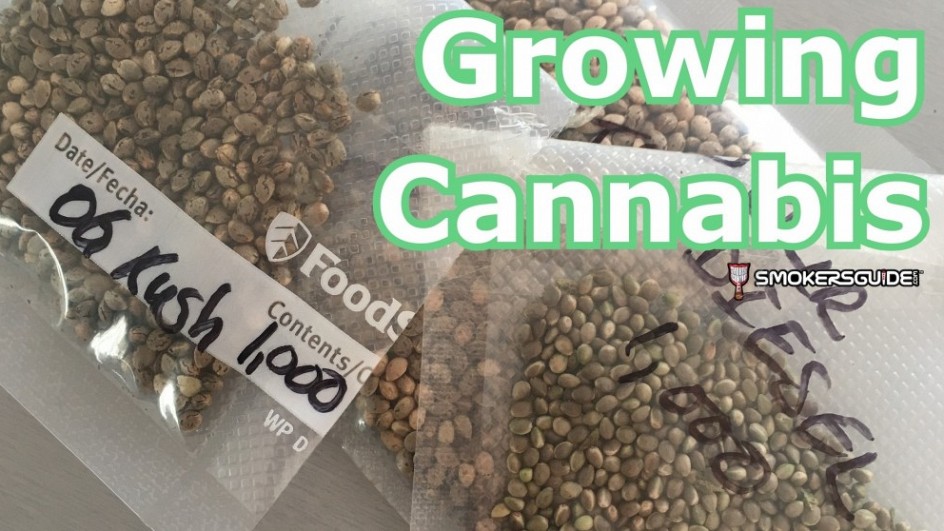Amidst these varying perspectives, a group of enthusiasts exists with a keen interest in cultivating cannabis themselves. Yet they often find themselves puzzled over the initial “how.”
In the past, cultivation tips were whispered and handed down almost like stories. This secrecy has given birth to a blend of myths and truths, making it challenging to separate facts from stories.
The good news is that things are changing. Now, there are numerous resources available for aspiring growers, filled with insights on nurturing this plant and enjoying the process. This comprehensive guide stands out for its simplicity and friendliness to beginners.
So, whether you’re pursuing this for leisure or out of curiosity, we’ve got you covered. Let’s start this journey together!
The Cannabis Life Cycle: A Journey
Understanding the lifecycle of the cannabis plant is the fundamental step of cultivation. Without aclear knowledge of its different phases, growing a healthy plant with optimal yield can get quite challenging. So, here are the three stages of cannabis plant cultivation:
1. Seedling Stage: As the name suggests, during this stage, a seed sprouts and begins its life. For this, the plant must get the right amount of light and moisture.
2. Vegetative Stage: The plant grows taller and develops its branches and leaves. Thereby, it requires more light, typically 18 hours a day, and increased nutrients to support its rapid growth.
3. Flowering Stage: This is the final stage where the plant produces buds. This is the most anticipated phase for growers, as the buds are the harvestable part of the plant. During this time, light is reduced to 12 hours, signaling the plant to flower.
It’s worth noting that each stage is special and needs different care. By understanding what your plant needs at each point, you’ll have a happy, healthy cannabis plant.
The Seed Matters: Types and Their Differences
Now that you know about the plant’s lifecycle, let’s learn about picking the right seed. After all, these seeds set the stage for your plant’s life. So, here’s a quick look at their types and what makes them different:
- Regular Seeds: These are nature’s basic seeds. When you plant them, you might get either male or female plants. It’s a bit of a gamble, as only the female plants give you the smokable buds. These generally include Afghan Kush, Brazil Amazonia, and Bubba Haze Seeds.
- Feminized Seeds: These seeds are special because they will almost always grow into female plants. This means more buds! That’s why they’re a popular choice for growers who don’t want any surprises. Commonly, these include Acapulco Gold Seeds, Ice Cream Cake, and Kilimanjaro seeds. If you’re uncertain about choosing feminized seeds, seed banks can always help you make the right decision.
- Auto-flowering Seeds: These seeds are all about timing. They start flowering when they reach a certain age, not based on light. These are great for beginners or if you want a quick harvest, but they might give you less weed in the end. These include amnesia, Afghan Express, and DNA Genetics Weed Seed.
Keep in mind that each seed type can have a significant effect on your production. So, choose wisely!
Lighting: The Lifeline of Cannabis
Whether you’re growing your cannabis indoors or outside, understanding light is crucial. Or we can also say that light is to cannabis what air is to us: absolutely essential. So, you need to ensure that your plants get a good 8-10 hours of direct sunlight daily.
But here’s the thing: for outdoor plants, the sun does most of the work. On the other hand, When it comes to indoor growing, things get a bit more hands-on as you have to control the light. So, keep this in mind:
In the early growth stage, plants will need a lot of light, about 18 hours a day, followed by 6 hours of darkness. But when the flowering stage kicks in, switch it up to a balanced 12-hour light and 12-hour dark routine.
Also, it’s not just about quantity but also about the right timing and quality of light. So, for indoor cannabis growth use:
- Blue Spectrum: These are best for the vegetative stage. It encourages strong and bushy growth. Common sources include metal halide (MH) lamps.
- Red Spectrum: This light is vital during the flowering stage. It promotes budding. High-pressure sodium (HPS) lights are a popular choice.
- Light Intensity: Adjusting the distance between the plant and the light source can regulate intensity. If the light is too close, it might scorch the plant; if it is too far, the plant may not receive adequate light. That’s why it’s recommended to invest in a light meter that can help gauge intensity accurately.
- Water Wisely: Neither Too Little Nor Too Much. Water is crucial for any plant, and cannabis is no exception. However, it’s essential to strike a balance when watering.
To be more specific, if you give your plant too much water, its roots can drown, causing the leaves to droop. On the other hand, too little water can dry out the soil, stressing your plant and making its leaves turn crispy.
The secret is to wait until the top layer of the soil feels dry before watering again. This way, you ensure the roots get just the right amount of moisture.
Pests and Diseases: Keep Them At Bay
Finally, growing cannabis means sometimes facing unwanted guests like pests and diseases. These little troubles can harm your plants, weakening them or ruining your whole crop.
That’s why it’s always better to stop these problems before they start. How? You may ask. Well, regularly check your plants for any signs of bugs or unhealthy spots on the leaves. By keeping your growing area clean and ensuring it has good airflow, you can avoid many common issues.
If pests do show up, there are natural ways to fight them, like using friendly bugs or safe sprays. Taking these steps helps ensure your plants grow strong and healthy.
Final Thoughts
Growing cannabis is a rewarding journey full of learning and discovery. From picking the right seeds to ensuring your plants are free from pests, each step plays a crucial role in your final harvest. So, keep these insights in mind and cultivate them with patience and care.
SmokersGuide.com disclaimer:
SmokersGuide.com takes pride in featuring high quality articles to its readers, however does not assume liability for the claims and medical facts presented by the author. Please check with your doctor or medical practitioner, before consuming any products containing CBD, THC, herbs and Smart Products, or any other products recommended here. Make sure to always check for advised dosages, and please keep all THC and CBD products (including vapes, flowers, oils, concentrates or edibles) away from children, animals and any persons who may not desire to consume them. Make sure to clearly mark all products with warnings about the contents, and store all products in locked, child-proof containers, to avoid accidental ingestion. Please check your own country's laws regarding CBD and THC, and make sure shipping is allowed. SmokersGuide.com content is always created in countries where cannabis products are legal, for medicinal and/or for recreational uses. Smokers Guide does not encourage the use of cannabis in countries where its consumption is illegal.



 Photo-Period vs. Autoflowering Cannabis Seeds: What's Good...
Photo-Period vs. Autoflowering Cannabis Seeds: What's Good...  *Key Insights for Successful Cannabis Growth You Should...
*Key Insights for Successful Cannabis Growth You Should...  BUD ROT. Identifying, Curing, and Prevention
BUD ROT. Identifying, Curing, and Prevention  Useful Tips For Buying Cannabis Seeds From The Best Seed...
Useful Tips For Buying Cannabis Seeds From The Best Seed...  Know before you grow - how to check the quality of...
Know before you grow - how to check the quality of...  Are German Police Trying to Hire Cannabis Smokers?
Are German Police Trying to Hire Cannabis Smokers?  Smokers Guide Best in Amsterdam - Coffeeshops, Weed, Hash...
Smokers Guide Best in Amsterdam - Coffeeshops, Weed, Hash...  Growing Cannabis in Amsterdam
Growing Cannabis in Amsterdam 
